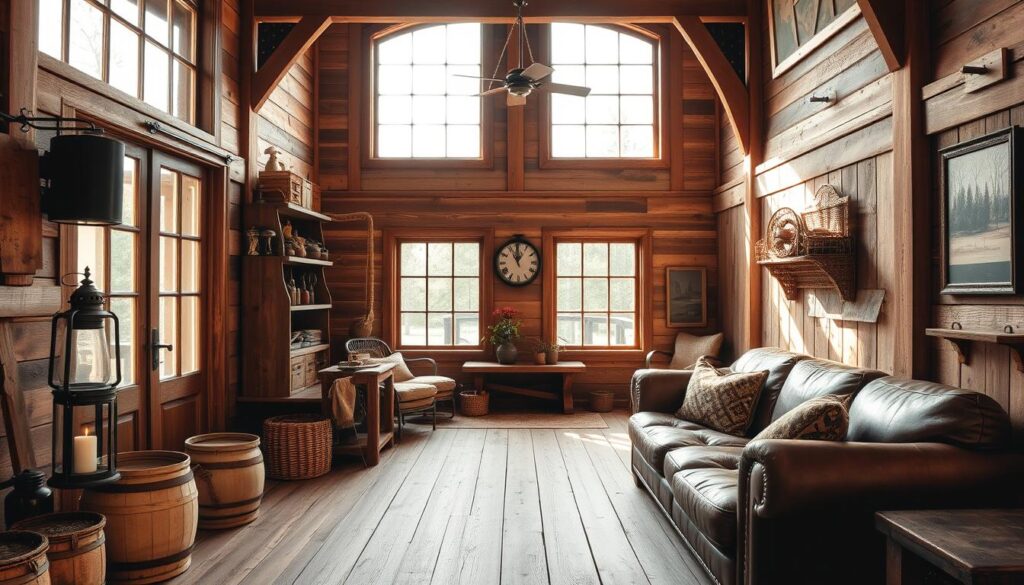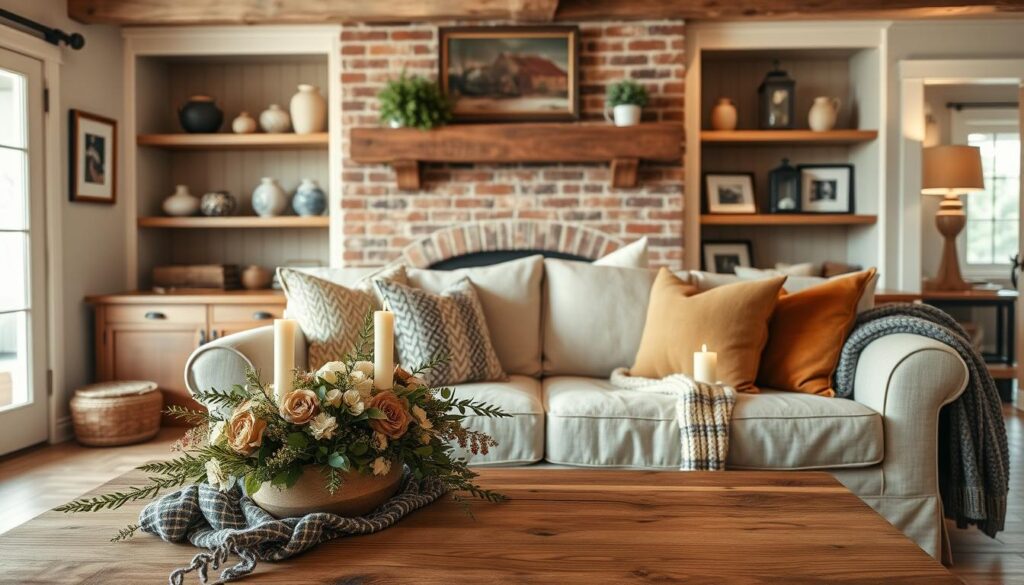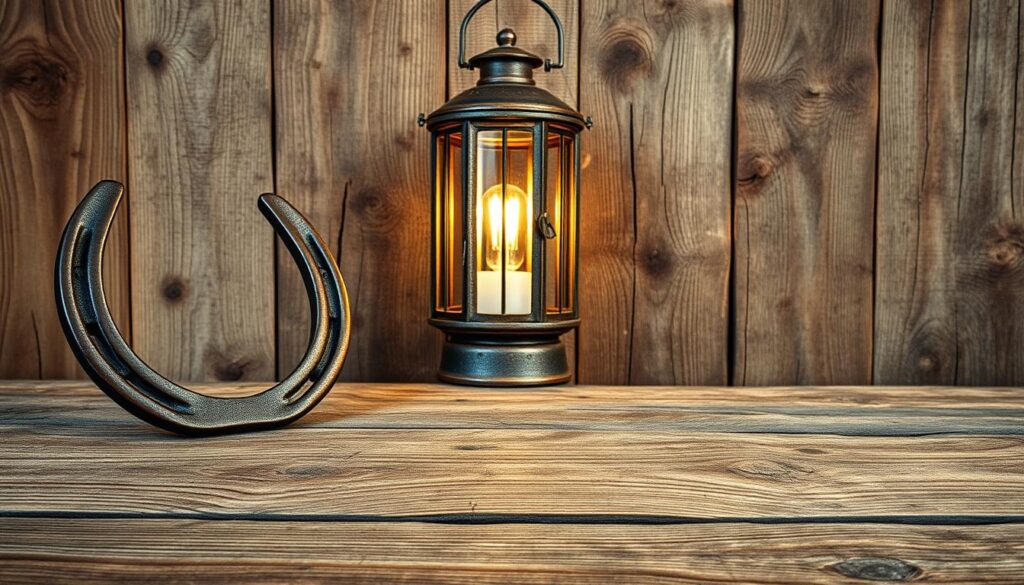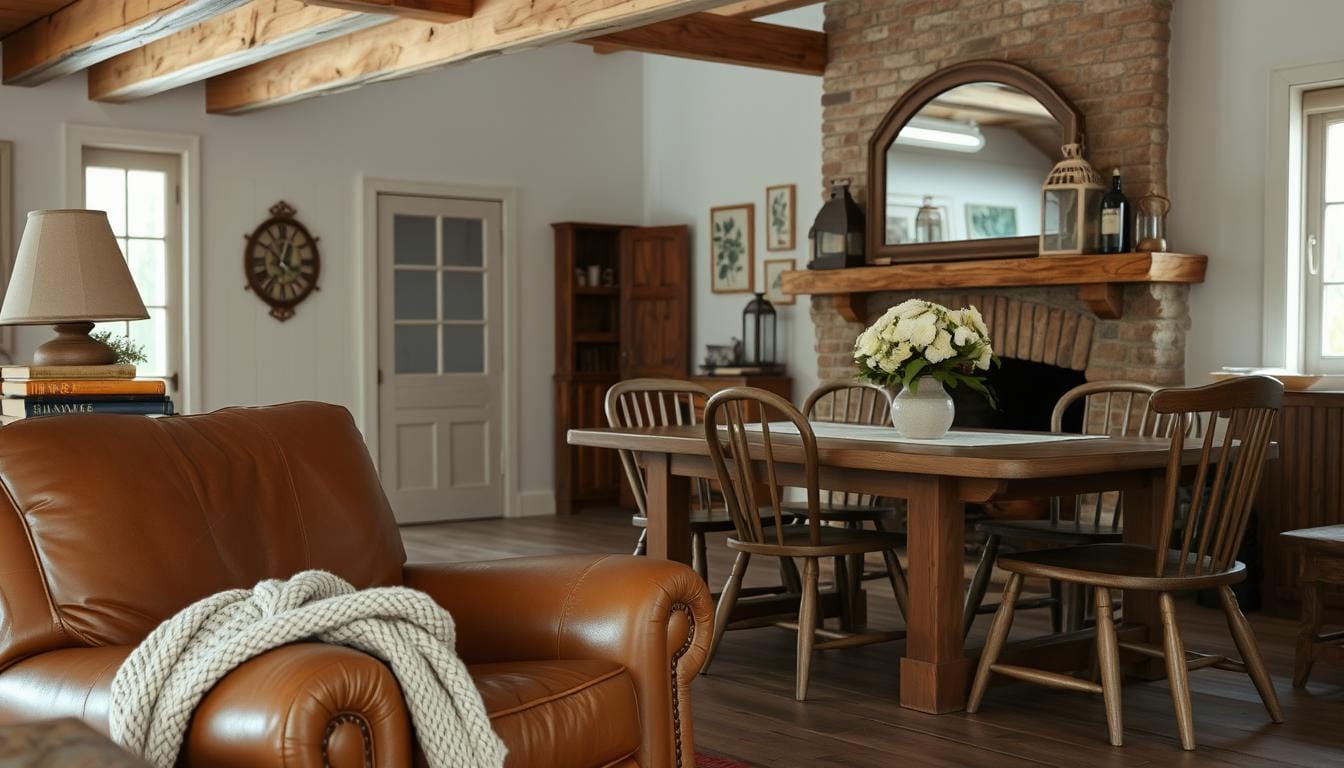I’ll never forget walking into my friend Sarah’s house last fall. Her living room felt like a warm hug – weathered wood shelves holding family photos, a chunky knit throw draped over a slipcovered sofa, and the soft glow of a galvanized metal lantern above the fireplace. “It’s just stuff we already had,” she shrugged, but that casual mix of comfort and character stuck with me.
That’s the magic of this approach to home design. It’s not about perfect catalog spreads or expensive renovations. Instead, it’s layering natural textures, meaningful pieces, and practical solutions to create spaces where life actually happens. Think soft cotton curtains framing morning coffee rituals, or a sturdy farm table doubling as homework central and dinner party showcase.
What makes this aesthetic so enduring? It roots itself in modern farmhouse style principles – blending clean lines with rustic warmth, honoring tradition without feeling stuffy. The result? Rooms that welcome muddy boots and Sunday brunches with equal grace.
Over the years, I’ve seen how these ideas transform houses into homes. Whether you’re starting fresh or refreshing your current setup, the key lies in balancing function with soul-soothing details. Let’s explore how to bring that easygoing charm into your own space – one lived-in layer at a time.
Understanding the History and Modern Appeal of Farmhouse Style
Growing up visiting my grandparents’ rural property, I marveled at how their kitchen tools doubled as wall art. That’s the essence of this design philosophy – beauty born from purpose. What began as practical solutions for early settlers has become a beloved aesthetic connecting us to simpler times.

Origins and Heritage of Farmhouse Decor
Pioneers didn’t have decorating budgets – they used what lasted. Think:
- Thick pine tables that survived generations
- Iron hooks holding aprons and harvest baskets
- Handwoven rugs from leftover fabric scraps
Every piece told a story of resilience. My favorite heirloom? A dough bowl repurposed as a fruit display – “Grandma’s multitasking masterpiece,” Dad calls it.
Modern Updates and Trends in Farmhouse Living
Today’s interpretation mixes old soul charm with 21st-century needs. Designers now pair reclaimed beams with sleek lighting, creating spaces that feel grounded yet fresh. Key updates include:
- Open shelving replacing heavy cabinets
- Neutral palettes with bold accent walls
- Smart storage solutions disguised as vintage trunks
For those blending eras, I recommend starting with versatile wooden furniture as your foundation. It’s amazing how a weathered console can bridge past and present.
Incorporating Farmhouse Decor Into Your Home
A client once told me her living room felt too sterile. We fixed it with a single weathered wood mirror above her sofa. That’s the power of thoughtful accents – they whisper warmth without shouting for attention.

Simple Ways to Add Warmth with Found Pieces
Start with items that tell visual stories. My go-to strategy? Blend functional pieces with character. Try these starters:
- Woven baskets that hide remotes or hold blankets
- Ceramic pitchers doubling as utensil holders
- Neutral linen pillow covers with visible stitching
These elements work with modern or traditional furniture. I recently layered a sleek leather chair with a chunky knit throw – instant coziness. The key is balancing textured neutrals with your existing color palette.
For kitchens, open shelving displays stoneware bowls beautifully. In bathrooms, try framed botanical prints with slightly distressed edges. Even small touches matter – swap plastic organizers for galvanized metal bins on office desks.
Remember: authentic charm comes from mixing eras. That 1970s side table? Pair it with a modern lamp and hand-carved bowl. Suddenly, your space feels curated – not catalog-perfect.
Mixing Materials and Textures: Wood, Metal, and Vintage Accents
My favorite design projects always start with a tactile experiment – running my hands over rough-hewn wood, tapping cool metal surfaces, and arranging vintage treasures like puzzle pieces. This sensory approach helps create spaces that feel richly layered yet completely lived-in.

Rustic Wood and Worn Finishes
Nothing beats the warmth of distressed wood. I recently transformed a client’s bland entryway using three simple elements:
- A reclaimed oak console table
- Walnut-framed mirror with chippy paint
- Teak bowl holding seasonal pinecones
The secret? Mix light and dark tones intentionally. Pair pale barnwood shelves with rich mahogany frames to create depth. For smaller spaces, try textured elements like carved wooden trays – they add character without overwhelming.
Industrial Metal and Repurposed Elements
Galvanized metal brings earthy contrast to wood’s softness. My go-to trick: use enamel pitchers as utensil holders or stack vintage-style plates on iron stands. Last winter, I styled a jaw-dropping holiday centerpiece using:
- Antique copper measuring cups
- Pewter candlesticks
- Steel lantern filled with cinnamon sticks
Don’t shy from mixing metals – brass drawer pulls look stunning against iron bed frames. For seasonal flair, repurposed metal elements make perfect bases for wreaths or candle displays. The key is balancing industrial edges with organic shapes.
Seasonal Farmhouse Decor Ideas for a Cozy Home
Last December, I noticed how swapping my summer wildflowers for pinecones instantly warmed up our dining room. Seasonal shifts invite us to refresh our spaces with nature’s rhythm – no full-room makeovers required. A few intentional tweaks can make your home feel festive yet grounded year-round.
Holiday Touches and Seasonal Updates
Start with textiles that do double duty. I rotate linen pillow covers with stitched leaf patterns in fall and switch to crisp white ones with red stitching for winter. Try these effortless updates:
- Layer chunky knit throws over chairs when temperatures drop
- Display dried lavender bundles in enamel pitchers during spring
- Use striped tea towels as mini table runners for summer picnics
Wall spaces offer prime real estate for seasonal storytelling. Last Easter, I hung a grapevine wreath with pastel ribbons above our mantel – it stayed up through May! For winter, try framing vintage-inspired snowflake sketches or arranging birch branches in a galvanized metal vase.
Build a core collection of neutral basics, then add seasonal pops. My wooden dough bowl holds apples in September, pinecones in December, and lemons in July. The secret? Let each piece evolve with the days rather than storing specialty items. Those wheat bundles from autumn? Tie them with red velvet ribbon for Valentine’s Day!
Bringing Your Farmhouse Vision to Life
Last month, I helped a young couple transform their city apartment using a single vintage dough bowl as their centerpiece. That’s the beauty of this style – meaningful arrangements trump perfection. Start by choosing items that spark joy and serve purpose, like woven baskets hiding remotes or ceramic pitchers holding utensils.
Build your collection gradually. Mix authentic flea market finds with new pieces from curated farmhouse sets – think weathered cutting boards paired with crisp linen towels. In kitchens, display functional art like ironstone plates on open shelves. For living areas, layer framed botanical prints above a distressed wood console.
Smart styling creates instant charm. Try these ideas:
- Stack vintage books under a table lamp for height
- Drape chunky throws over ladderback chairs
- Use wire baskets as catchalls for keys or produce
Remember: great spaces evolve. That farmhouse-inspired wall art you love today? It might inspire tomorrow’s entire color scheme. Focus on pieces that tell your family’s story – every scratch and patina adds warmth money can’t buy.
